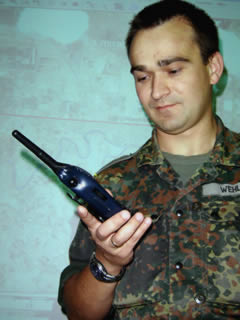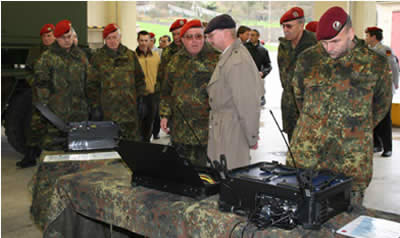The London based, Arabic newspaper Al-Hayat reported last Monday, that the Iranian armed forces had raised their level of alert in anticipation of a possible attack on its nuclear facilities. What seems to be the reason for Tehran’s concern, are two developments, one interior and the other exterior. President Mahmoud Ahmadinejad’s latest statements at Natanz enrichment plant, praising Iran’s nuclear program, sent a new signal to the international community, in particular Washington, that Tehran was clearly defying all calls to stop the ongoing momentum. Ali Larijani, Iran’s chief nuclear negotiator with the West even went as far as to warn, that Iran would review its membership of the Nuclear Non-Proliferation Treaty.
The exterior event, which raised eyebrows in Tehran must have been the quite unprecedented but widely publicized visit of a high-profile military group, led by US Marine general James T Conway, to 26th Marine Expeditionary Unit (MEU) aboard the multipurpose amphibious assault ship USS Baatan (LHD 5) in the Persian Gulf. In past circumstances, such visits were kept away from the public, or played down.
The waters in the Arabian Gulf ( or Persian Gulf), are highly turbulent these days. The United States has bolstered its naval presence only recently, by deploying another carrier strike force – USS Nimitz, which is on its way. Already deployed there are the carrier strike groups USS Dwight D Eisenhower which is located on station in the Gulf, while the John C. Stennis Strike Group, cruises not far away, in the Arabian Sea. Also deployed in the Arabian Sea is a French carrier group, led by the Charles de Gaulle. What had already sent jitters to Iran’s military brass, were the US Navy’s most extensive maneuvers held in the Gulf region since the 2003 invasion of Iraq. The exercises involved over 10,000 US personnel on warships and aircraft making simulated attacks on enemy shipping, hunting enemy submarines and disarming mine barriers.
Already on top of the world’s focus of interest, due to its crucial strategic posture, the Persian Gulf is a 600-mile (nearly 1000 km) long body of water that narrows to 34 miles (approx 55km) at the Hormuz Strait before connecting to the Arabian Sea. To the west are the Gulf states and Saudi Arabia and to its East spans the nearly 2500km long coast of Iran. Most of the coastal region of Iran bordering the Gulf is of rugged mountainous scenery which has significant strategic value. In those the mountains overlooking the gulf, Iranian artillery batteries are deployed, according to US intelligence reports, some even equipped with 155mm artillery shells filled with chemical agents.
Due to its highly geo-strategic location, Iran possesses the capability to disrupt, if not completely stop, the flow of oil from the Gulf. Giant oil tanker traffic carrying daily cargo of millions barrels per day could find themselves threatened by mines or crossfire between opposing forces, a concern, which would raise insurance fees to unacceptable level. Such a development could send shockwaves throughout the oil world- and Iran’s rogue president is perfectly aware of its consequences- oil prices will sky-rocket to unprecedented proportions, filling his nation’s coffers with funding for his sinister projects!
Due to its highly geo-strategic location, Iran possesses the capability to disrupt, if not completely stop, the flow of oil from the Gulf. Giant oil tanker traffic carrying daily cargo of millions barrels per day could find themselves threatened by mines or crossfire between opposing forces, a concern, which would raise insurance fees to unacceptable level. Such a development could send shockwaves throughout the oil world- and Iran’s rogue president is perfectly aware of its consequences- oil prices will sky-rocket to unprecedented proportions, filling his nation’s coffers with funding for his sinister projects!
But present focus is primarily on the strategic Strait of Hormuz., by far the world’s most critical oil traffic chokepoint, which lies at the entrance to the Persian Gulf. Over 14 million barrels of oil are passing daily, round-the-clock, through this Strait. The strait itself is barely 21 miles (34km) wide. At its narrowest, the Strait consists of two 1-mile (1.5km)-wide channels for inbound and outbound tanker traffic, as well as a 2-mile (3km)-wide buffer zone.

But that’s not all that bothers the worlds leading shipping Barons in this dangerous stretch of waterway. The Iranian port of Bandar Abbas is poised at the head of the Straits of Hormuz and is the military nerve centre from which the Iranian defense strategy in the Persian Gulf would be coordinated in an emergency.
Its location along the Gulf already made it a highly strategic military area since ancient history. In the 5th century BC, Darius, the king of Achaemenid Empire embarked from here for his daring expedition into India. Also, as one of the Persian Gulf’s most dominating points, the port continued its importance supporting Alexander the Great’s conquests in this region. The Portuguese navy, the Persian Safavid Empire, local Arab dynasties and the British took turns in controlling the area before it finally reverted to Iranian control in the last century.
Bandar Abbas’s coastline already bristles with military surface radars and anti-aircraft batteries as well as sprawling navy camps. Surface-to-surface missiles capable of targeting shipping moving through the Straits of Hormuz are deployed in fortified bunkers protecting them against attack from US Navy airpower in the Gulf. The effectiveness of these coast-to-ship rockets was dramatically demonstrated by Hezbollah last year when it hit a high-tech Israeli Sa’ar missile corvette Hanit, off the Lebanese coast at the start of the five-week conflict.

 Chahbahar naval base, the closest and best access point of Iran to the Indian Ocean is being modified to serve the kilo-class submarines Iran bought from Russia in the 1990s. In 2001 the Iranian armed forces staged the Unity-80 naval exercises from here, as part of an effort to make the Chahbahar naval base and its submarines operational. The naval base at Jask is located in Hormuzgan Province, on a commanding position at the entrance to the Hormuz strait. Its highly strategic position was already widely recognized when in 1820 the English fleet fought the “Battle of Jask” against the Portuguese navy in the Gulf. In the Second World War, a British tanker, the British Venture was sunk by a Japanese submarine off Jask, which at the time held an RAF surveillance station. Currently, intelligence reports have identified Jask as the center of Chinese made long-range missiles.
Chahbahar naval base, the closest and best access point of Iran to the Indian Ocean is being modified to serve the kilo-class submarines Iran bought from Russia in the 1990s. In 2001 the Iranian armed forces staged the Unity-80 naval exercises from here, as part of an effort to make the Chahbahar naval base and its submarines operational. The naval base at Jask is located in Hormuzgan Province, on a commanding position at the entrance to the Hormuz strait. Its highly strategic position was already widely recognized when in 1820 the English fleet fought the “Battle of Jask” against the Portuguese navy in the Gulf. In the Second World War, a British tanker, the British Venture was sunk by a Japanese submarine off Jask, which at the time held an RAF surveillance station. Currently, intelligence reports have identified Jask as the center of Chinese made long-range missiles.
US Military analysts warn that Iran’s missile armaments pose the greatest concern for American forces in the Gulf, especially for the US Navy. Geographically, the Iranian coast facing the Persian Gulf is a looming wall of mountains that look down upon any naval forces arrayed in those waters. But the greatest threat comes from the Iranian occupied islands located off the Persian Gulf coast which are strategically sited, virtually controlling the shipping lanes of the Strait of Hormuz.
US intelligence has located advanced anti-ship missiles are deployed at Abu Musa and two other islands, Qeshm and Sirri. Among the most dangerous, is the Russian-made 3M-82 Moskit anti-ship cruise missiles (NATO designation: SS-N-22 “Sunburn”. To demonstrate their effectiveness, one has only to be reminded of the serious incident, in which, right in these very waters, in May 1987 the USS Stark was nearly cut in half by two anti-ship missiles. The Asian Times reported recently, that Abu Musa Island, along with its mountainous areas, is teeming with Supersonic cruise missiles such as Yakonts, Moskits, Granits, and Brahmos, controlled by Iranian IRGC crews.
In late January of 2000, US satellites monitored an Iranian Marine Brigade, with supporting artillery and SAMs, reinforcing Qeshm Island where many mobile anti-ship missiles were already located. Revolutionary Guard units also moved to reinforce the islands of Jazirezye Larak, Tunb al Kubra, and Abu Musa, as well as miscellaneous oil platforms. These surprising moves remained unexplained at the time, but raised the level of alert in nearby US military installations in Saudi Arabia and Gulf nations. At the same time the USS John C. Stennis strike group deployed to its station in the Gulf in support of the UK/US enforced no-fly zone in Sadam’s Iraq.
An unconfirmed report quoting unidentified Pentagon sources has recently revealed a top secret Iranian contingency plan, allegedly leaked by a former Iranian intelligence defector. The document detailed a strike plan which schematically laid out Iran’s military and strategic assets from the Straits of Hormuz. Coordinated by an operational headquarters, forces would integrate Revolutionary Guards missile units, strike aircraft, surface and underwater vessels, anti-shipping missiles, mine cruise missiles, all hitting targets in the Sea of Oman and northern Indian Ocean. Senior Iranian commanders, like Rear-Admiral Ali Fadavi, of the Revolutionary Guard have expressed similar claims, although without going into operational details. While those reports should be regarded with caution, they nevertheless render an insight into the ongoing trends in Tehran’s naval strategy in the Gulf.
 Among its options, the Iranian Navy is reviewing contingency plans to attack tanker traffic and US naval forces in the Gulf. According to reports the IRGC naval wing has recently upgraded its “swarming” raids tactics, practiced already during the Iraq-Iran war with considerable success. Using masses of small rapid-attack speed boats these tactics require light forces with substantial firepower, which are capable to mount attacks on enemy prime targets, such as fully loaded giant oil tankers. Approaching from multiple directions, out of concealed bases along the coastline, hundreds of agile boats will converge on their target simultaneously from different directions. Fast missile or torpedo attack craft, are most suitable for this kind of operation. A small-scale demonstration could be the dramatic IRGC capture of the 15 brits in the Shatt-al Arab earlier this month.
Among its options, the Iranian Navy is reviewing contingency plans to attack tanker traffic and US naval forces in the Gulf. According to reports the IRGC naval wing has recently upgraded its “swarming” raids tactics, practiced already during the Iraq-Iran war with considerable success. Using masses of small rapid-attack speed boats these tactics require light forces with substantial firepower, which are capable to mount attacks on enemy prime targets, such as fully loaded giant oil tankers. Approaching from multiple directions, out of concealed bases along the coastline, hundreds of agile boats will converge on their target simultaneously from different directions. Fast missile or torpedo attack craft, are most suitable for this kind of operation. A small-scale demonstration could be the dramatic IRGC capture of the 15 brits in the Shatt-al Arab earlier this month.
Among Iran’s somewhat larger boats are ten Houdong-class patrol boats purchased from China for the IRGC (Pasdaran) Revolutionary Guard Corps. These ships displace 205 tons, carry four C802 missiles, a twin 30mm gun, and a twin 23mm gun. Also in service are ten 275 ton Karman class (French built Combattante II ) missile boats, armed with 76mm guns and C802 missiles.

It seems quite obvious that neither the Iranian navy nor its air force is a match against US Navy firepower deployed in the Persian Gulf. However, by using sophisticated asymmetric naval tactics against vulnerable prime targets, combining protected coastal and island deployed anti-ship missiles, mining operations with swarm tactics, the Iranian IRGC naval wing can cause substantial losses to strategic shipping lanes, as well as pose considerable challenge to US Navy strike group commanders, in their mission to defend this strategic lifeline for the benefit of global economy.
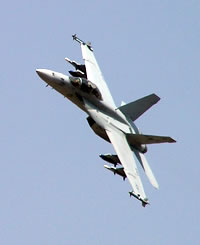 Two American competitors entered the contest – Lockheed Martin displayed the F-16 while Boeing demonstrated the twin-engine F/A-18E/F. Both companies are proposing their latest versions for the MRCA program. The Super Hornet is slightly large and considered to be an expensive proposition for the Indian requirement but is including almost all Indian requirements in the basic ‘Super hornet’ standard. The F-16 is also a suitable option. Although the aircraft is considered to be at the end of its “career”, and its maneuverability is inferior to the MiG-35, Lockheed Martin is expected to offer the F-16 with highly sophisticated avionics package, including the APG-80-0 AESA radar, making this mature platform an interesting proposition for the Indian requirement, especially when net-centric precision attack is considered.
Two American competitors entered the contest – Lockheed Martin displayed the F-16 while Boeing demonstrated the twin-engine F/A-18E/F. Both companies are proposing their latest versions for the MRCA program. The Super Hornet is slightly large and considered to be an expensive proposition for the Indian requirement but is including almost all Indian requirements in the basic ‘Super hornet’ standard. The F-16 is also a suitable option. Although the aircraft is considered to be at the end of its “career”, and its maneuverability is inferior to the MiG-35, Lockheed Martin is expected to offer the F-16 with highly sophisticated avionics package, including the APG-80-0 AESA radar, making this mature platform an interesting proposition for the Indian requirement, especially when net-centric precision attack is considered.

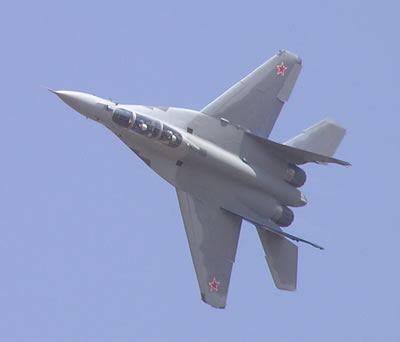

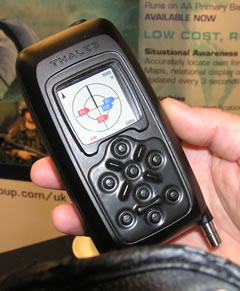

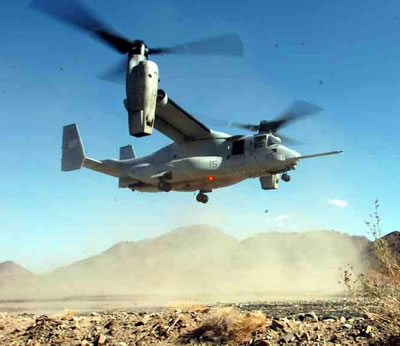


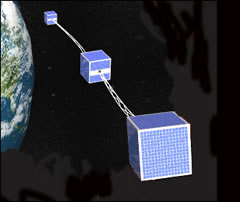
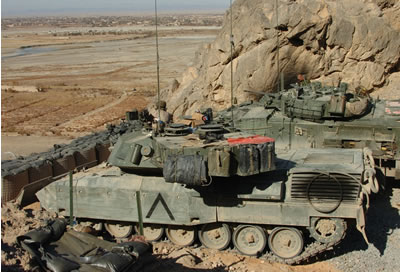






 Among its options, the Iranian Navy is reviewing contingency plans to attack tanker traffic and US naval forces in the Gulf. According to reports the IRGC naval wing has recently upgraded its “swarming” raids tactics, practiced already during the Iraq-Iran war with considerable success. Using masses of small rapid-attack speed boats these tactics require light forces with substantial firepower, which are capable to mount attacks on enemy prime targets, such as fully loaded giant oil tankers. Approaching from multiple directions, out of concealed bases along the coastline, hundreds of agile boats will converge on their target simultaneously from different directions. Fast missile or torpedo attack craft, are most suitable for this kind of operation. A small-scale demonstration could be the dramatic IRGC capture of the 15 brits in the Shatt-al Arab earlier this month.
Among its options, the Iranian Navy is reviewing contingency plans to attack tanker traffic and US naval forces in the Gulf. According to reports the IRGC naval wing has recently upgraded its “swarming” raids tactics, practiced already during the Iraq-Iran war with considerable success. Using masses of small rapid-attack speed boats these tactics require light forces with substantial firepower, which are capable to mount attacks on enemy prime targets, such as fully loaded giant oil tankers. Approaching from multiple directions, out of concealed bases along the coastline, hundreds of agile boats will converge on their target simultaneously from different directions. Fast missile or torpedo attack craft, are most suitable for this kind of operation. A small-scale demonstration could be the dramatic IRGC capture of the 15 brits in the Shatt-al Arab earlier this month.
